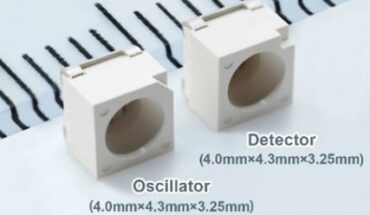Learn how YAGEO’s XSemi series is tackling power and efficiency challenges in electronics.
TTI Inc. has sponsored this post.

What do smartphones, e-scooters, solar inverters and IoT devices have in common? They all rely on MOSFETs (Metal-Oxide-Semiconductor Field-Effect Transistors) to function. These tiny transistors are used in every device that requires a switch-mode power supply—from consumer gadgets to industrial machinery—making them one of the most essential components in modern electronics.
A MOSFET is a semiconductor device with three terminals: the source, drain, and gate. The gate, which is insulated by a thin layer of metal oxide, regulates current flow between the source and drain. When a voltage is applied to the gate, it changes the conductivity of the main circuit. Among their many uses, MOSFETs can dim lights, amplify signals, remotely control motor speeds, and automatically switch circuits on and off.
Despite their versatility, MOSFETs often face issues around balancing efficiency with thermal losses. Like most electrical components, MOSFETs generate heat during operation—and if this heat is not properly managed, it can degrade performance and shorten the lifespan of the device. The problem of heat dissipation becomes even more pressing in high-power applications.
“Today’s designs demand more power while fitting into increasingly compact devices,” says Simon Reuning, global technical marketing manager at YAGEO Group. “Engineers must navigate the complexities of efficiency, thermal management and component size — all while developing MOSFETs that can meet these growing demands.”
This article explores how YAGEO’s XSemi MOSFETs address common issues, what engineers should consider when using them, and applications where these components are most impactful.
Standout Features of YAGEO’s XSemi MOSFETs
One of the defining features of YAGEO’s XSemi MOSFETs is their ultra-low on-resistance (RDS(on)) with fast switching performance. On-resistance is the resistance between the drain and source terminals when the MOSFET is active. A lower RDS(on) minimizes conduction losses during switching, reducing the amount of energy converted into heat. This not only improves overall efficiency but also decreases the self-heating of the MOSFET, enabling it to handle higher power conditions.
“A key focus in MOSFET design is optimizing thermal dissipation,” says Reuning. “For example, we look at innovative ways to effectively channel heat away from the device.”
XSemi MOSFETs offer advanced packaging for enhancing thermal dissipation. They are also built to perform in tough conditions, such as outdoor or industrial settings where components have to withstand temperature fluctuations, moisture, and other environmental stressors. This is especially relevant in applications like e-scooters, which must maintain consistent performance when exposed to variable conditions.
Ruggedized features like enhanced avalanche energy ratings allow XSemi MOSFETs to endure high-energy events without catastrophic failure, extending the lifespan of components. These ratings improve the device’s ability to withstand energy transients caused by conditions such as voltage spikes, current surges, or load switching. This is particularly important in applications where MOSFETs operate in harsh environments, such as industrial or high-power systems.
In practical terms, avalanche capability determines how well a MOSFET can absorb excess energy without failing. When a MOSFET is exposed to a voltage that exceeds its maximum drain-source voltage, it enters the breakdown region. In most cases, this would destroy the device. However, MOSFETs with enhanced avalanche capability can handle such voltage spikes while continuing to operate within safe temperature and current limits, as defined in their datasheets.
“A high avalanche rating enhances system robustness, making power switching more reliable during transitions between different frequencies,” says Reuning.

Trade-offs Engineers Must Consider When Using MOSFETs
Engineers must navigate a delicate balance between key performance parameters when selecting the right MOSFET for their application. Whether it’s achieving lower conduction losses, faster switching speeds, or higher voltage tolerances, every decision impacts the performance of the system.
One primary consideration is the interplay between on-resistance (RDS(on)) and gate charge (Qg). Gate charge refers to the amount of charge required to activate the MOSFET by injecting charge into the gate electrode. A lower gate charge results in lower switching losses and higher switching speeds, which are particularly advantageous in high-frequency applications like motor drives or DC-DC converters. However, these designs come with higher RDS(on).
“A low gate charge enables faster switching and allows surrounding components—such as inductors and capacitors—to shrink, ultimately increasing efficiency,” explains Reuning. “However, this often comes at the cost of higher RDS(on) and reduced power-handling capabilities. Conversely, achieving low RDS(on) typically requires a larger die and a slightly higher gate charge.”
The choice of MOSFET construction further complicates the decision-making process, with each architecture bringing unique advantages and limitations. Traditional planar designs are cost-effective but may lack the advanced performance characteristics needed for high-power applications. Trench constructions optimize for low RDS(on), while double-gate designs prioritize lower gate charge and faster switching speeds. Superjunction MOSFETs offer smaller die sizes and support higher switching frequencies.
Voltage requirements also play a significant role. For instance, automotive applications increasingly demand MOSFETs capable of handling 800V systems.
“High-voltage MOSFETs inherently require higher RDS(on) and gate charge,” says Reuning. “The key challenge is determining whether the trade-off is manageable within your design constraints.”
At the end of the day, Reuning believes that the most crucial task for engineers is to carefully weigh the trade-offs and optimize their designs accordingly.
“Optimizing a MOSFET design always involves trade-offs,” says Reuning. “Low RDS(on) comes at the cost of other parameters, just as reducing gate charge requires sacrifices elsewhere. There’s no single packaging that delivers the best of everything — at least not yet. Engineers must determine which characteristics matter most for their application. For example, if high switching frequency isn’t a priority, you might tolerate a higher gate charge in exchange for improved voltage handling. Careful evaluation of these trade-offs is crucial for selecting the right components.”
Applications of XSemi MOSFETs
YAGEO’s XSemi MOSFETs have applications across many established industries and emerging markets.
“Our MOSFETs support a wide range of power applications, from EV charging stations and solar panels to battery management systems, industrial power tools, servers and telecommunications power supplies,” says Reuning. “They are also well-suited for system power, PCs, portable devices and switch-mode power supplies. With a diverse portfolio covering various case sizes — from surface mount to through-hole — and multiple voltage levels, we offer solutions tailored to different design requirements.”
As mentioned earlier, XSemi MOSFETs work well in e-scooters—not only due to their ruggedized features but also their high energy efficiency, particularly in devices like inverters and onboard chargers. The components are also integral to renewable energy systems. Solar inverters and home battery backup systems, such as battery walls, depend heavily on MOSFETs for efficient energy conversion and storage.
XSemi MOSFETs are additionally useful for IoT and edge computing applications, which involve compact, low-power solutions. The increasing miniaturization of power supplies in these fields necessitates smaller components and more energy-dense packaging.
Here too, Reuning discusses some considerations for engineers: “What trade-offs can be made for a smaller footprint? For instance, can increasing the switching frequency allow for the use of smaller components, such as inductors?”
“What trade-offs can be made for a smaller footprint? For instance, can increasing the switching frequency allow for the use of smaller components, such as inductors?”
XSemi MOSFETS have also helped manufacturers optimize power systems in real-world applications. In one case, a power supply manufacturer leveraged a 600V N-channel MOSFET with enhanced avalanche energy ratings to improve the efficiency and reliability of an inverter design. Another success story involved a motor application where a low RDS(on) MOSFET allowed for more reliable operation during high-power cycling, leading to longer operational life and improved overall performance.
YAGEO’s XSemi MOSFETs are playing a growing role in industry automation, where sensors and camera systems are being adopted to enhance productivity. As industries continue to evolve, MOSFETs will remain fundamental to meeting new power and performance demands.
To learn more, visit YAGEO at TTI.





